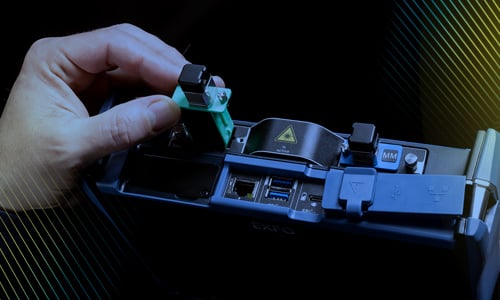6 ways to improve your broadband access deployments
In today's connected world, broadband access has become an essential requirement for individuals and businesses alike. The pandemic further emphasized the need for reliable and rapid internet connections, as remote work, online education and virtual interactions became established as the new norm. As the demand for broadband continues to surge, it is crucial to explore ways of improving the efficiency of broadband access rollouts while effectively meeting post-pandemic needs.
Broadband access technologies have evolved significantly over the years, enabling faster speeds and improved connectivity. Currently, we see the adoption of technologies such as GPON and EPON. GPON is widely used in North America, while EPON is prevalent in Asia, and a mix of both is observed in other regions. These technologies operate with different wavelengths and offer downstream and upstream capabilities.
The industry has also witnessed the emergence of advanced technologies like XGS-PON and NG-PON2. XGS-PON provides higher capacity, offering 10 gigabit capabilities using a single downstream and upstream wavelength while NG-PON2 utilizes multiple wavelengths for increased speed. There is also ongoing exploration of even higher speeds, such as 25G PON and 50G PON, with discussions around 100G PON.
In this evolving context, here are 6 ways to improve how you deploy broadband access:
- Upgrading infrastructure: To meet the demands of post-pandemic connectivity, upgrading the existing infrastructure becomes crucial. This involves deploying advanced technologies like XGS-PON and NG-PON2, which offer higher speeds and greater capacity.
- Optimal network topology: Designing an efficient network topology plays a significant role in enhancing broadband access. Careful consideration should be given to factors such as density, distance and split ratios to ensure seamless connectivity across the network.
- Balancing splitters: Choosing the right balance between balanced and unbalanced optical splitters is essential. Unbalanced or tapered splitters allow for asymmetrical power splitting, enabling efficient balancing of the loss budget. This allows us to reach longer distances and still meet the dynamic range criteria of the system deployed. Hence the reason why distributed tap architecture is the preferred method of rolling out broadband access to rural communities. However, OTDR testing of distributed taps can be tricky and requires an intelligent OTDR software that can provide the right visibility and reporting capabilities to overcome these new test challenges.
- Power measurement: Accurate power measurement is crucial to ensure reliable broadband access. Deploying new technologies such as XGS-PON brings higher capacity, but also involves measuring new wavelengths. Considering factors like the possibility of XGS-PON overlays over GPON networks and a transition period where both technologies are deployed, the use of a tool that can individually measure each channel is a must. Implementing tools, like a PON power meter, enables individual channel measurement, facilitating the identification of weak or overpowered signals.
- Troubleshooting tools: Equipping and empowering field teams with handy troubleshooting tools like fiber multimeters and inspection scopes can significantly enhance boost the efficiency of broadband deployments. Fiber multimeters aid in pinpointing faults and disconnected fibers, reducing the time required for fault detection and resolution. Inspection scopes allow for visual inspection, ensuring the quality and cleanliness of connectors. A recent study conducted by EXFO revealed that fault location and dirty/damaged connectors accounted for 90% of trouble tickets in PON deployments.
- Testing services at customer premises: With customers increasingly reliant on WiFi connectivity, it becomes crucial to test and optimize WiFi services on site. Today, there are testers for residential services that can measure throughput and ensure customers receive the expected speeds and reliable connections. These testers empower technicians to close jobs confidently while reassuring subscribers that the job has been done right and that they are getting the expected bandwidth.
By adopting these deployment strategies, you will be sure to deliver seamless connectivity and enrich the digital experiences of individuals and businesses alike.
To gain further insights into how to better deploy and thoroughly test broadband access, watch this recent webinar I did, in collaboration with the Fiber Broadband Association: How to meet the post-pandemic demand for broadband access?




